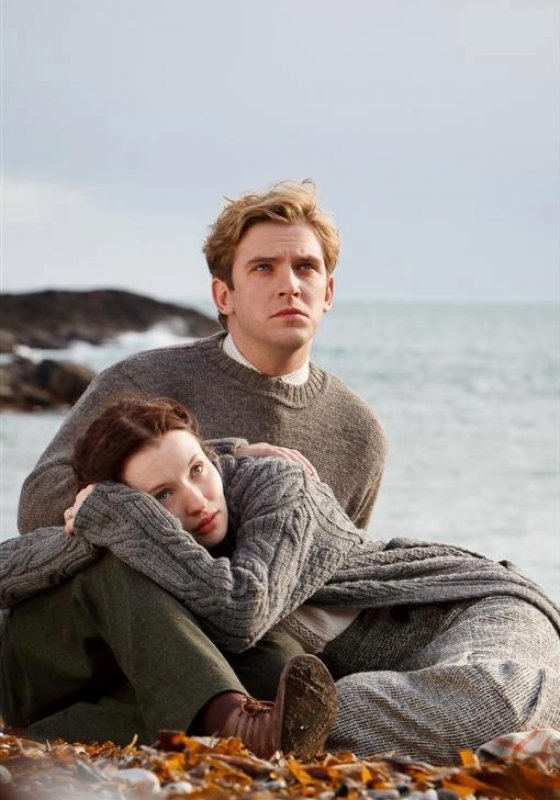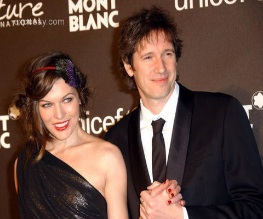Summer in February

Summer in February had all the potential to be lovely — admittedly a rainy day, winter warmer, hot chocolate of a film, but lovely. It also had all the correct ingredients: a dash of good looks from Browning, (and, if you are into the military-cum-fisherman aesthetic, from Downton‘s Stevens) a pinch of convivial fireside singing from everyone, and a glug of functional alcoholism from Cooper. What’s not to love? Well, pretty much everything.
The film – set in Lamorna, Cornwall, the home of the Newlyn School – is based on a book by Jonathan Smith, itself based on the diaries of land manager and soldier Gilbert Evans. It plays out in the midst of the bohemian interwar era – Stravinsky had just composed the avant-garde masterpiece The Rite of Spring, the ballet adaptation of which so enraged its audiences that they rioted. Duchamp took a surrealist adventure around Jura with the Picabias and Apollinaire, drank a lot, smoked a lot, took a lot, shagged a lot, came back, mounted a bicycle wheel onto a stool and created the first kinetic sculpture. Meanwhile, the Newlyn School were painting horse races and cricket and then a few years later a few of them were appointed Royal Academicians. Oh.
AJ Munnings (Cooper) was the Big Cheese of Lamorna during his short time there, taking artists under his wing, skinny dipping, painting nudes and probably burning nag champa like the bohemian he was. Florence Carter-Wood (Browning) was one of his protégées, and soon after he teaches her precisely nothing about painting they become embroiled in a love affair. Later when she proves herself incapable of making the obvious choice between AJ and Evans, a predictably boring triangle develops.
AJ is thoroughly, through and through unlikable. He breaks into sporadic bouts of poetry, reciting The Raven, some Wordsworth, a bit of Browning, he storms off when someone interrupts (coincidentally, exactly at the line ‘rapping, rapping at my chamber door’) and, tip tipping it all off, he hits women. But don’t worry about that, it’s fine, perfectly excusable behaviour. Do you know why? I do. Do you know how I know? Because no one, literally no one, from practically mute Harold Knight (Dingwald) to his wife Laura Knight (Morahan) forgets to tell you, what it is that makes it excusable. Hold your breath: AJ Munnings is a Genius. Capital G Genius, alcoholic, womanising, Genius, like the Jackson Pollock of horse race rendering, or like an arsehole.
Of course, as soon as a young, beautiful, tortured woman steps onto the scene she falls for AJ, I suspect because of his wonderful sense of humour (cf referring to Picasso as ‘Piss-casso’). They proceed to get married, much to the dismay of his frankly completely unconvincing, best friend, Gilbert Evans (Stevens,) and just about everyone else on the Island including Florence herself.
Evans, the only non “artist” on Lamorna, is your standard unassuming, military, cable-knit-sweater wearing, side-parted good guy. He’s also painfully dull to watch on screen. Perpetually looking like a kicked puppy, his acting is in the league of Dido’s music, popular amongst the middle-aged trendies of 2003, but unremittingly boring to most everyone else. Which, in fact, is probably why Florence decides to marry the roguish prick, Munnings. But again, not to worry, because it’s not like he tries to rape her or anything. OH NO WAIT THAT’S EXACTLY WHAT HAPPENS.
There are some pretty shots of the sea, at best evoking Ansel Adams’ seascapes and at worst evoking tumblr. These small graces, paired with Wallfisch’s histrionic soundtrack briefly convince us we’re watching something worth burning our eye calories for, but we’re not. We are, instead, left wondering why we are watching a film about the Newlyn Group, who are effectively the Ryvita of the art world.
Plus, they’re not bohemian, they live in Cornwall.





Recent Comments